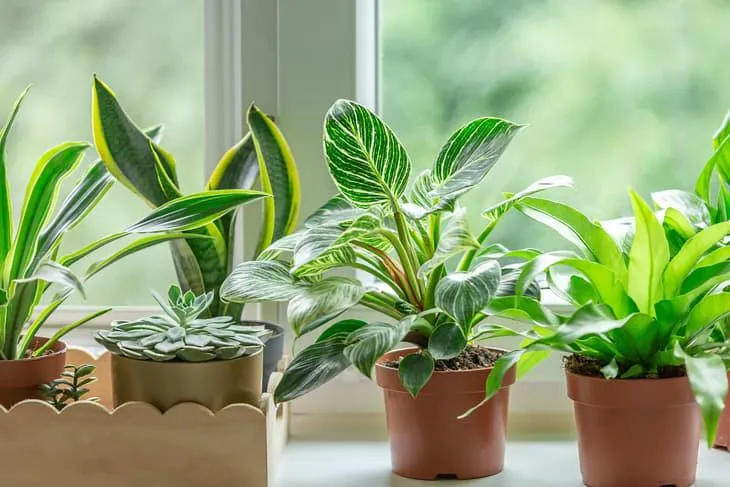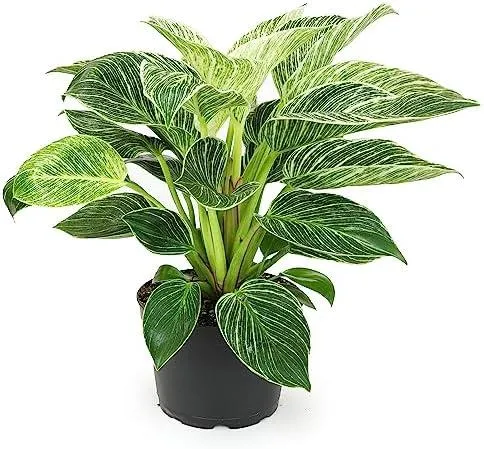Are Philodendrons Safe for Cats?
If you have an adventurous feline friend at home, they may be curious about your houseplants. One common houseplant that many cat owners wonder about is the philodendron. In this article, I’ll address all the important considerations regarding philodendrons and cats to help you determine if these leafy plants are a safe addition to your home.
Philodendron Toxicity for Cats
To start, let’s discuss the toxicity of philodendrons for cats. The good news is that most types of philodendron are generally considered non-toxic to cats. The American Society for the Prevention of Cruelty to Animals (ASPCA) rates philodendrons as “non-toxic” on their household plant list.
However, it’s important to note that some philodendron species may contain very small amounts of insoluble calcium oxalate crystals in their leaves and stems. If consumed in large quantities, these crystals could potentially cause mild irritation to the mouth and GI tract of cats.
From my experience as a veterinarian, I’ve rarely seen cases of toxicity in cats with only minimal philodendron leaf chewing or ingestion. The amount of crystals they would need to eat to cause issues is quite high. So in moderation, philodendrons are generally considered safe for feline friends.
Cat-Proofing Your Philodendron
While philodendrons may be non-toxic, that doesn’t mean your curious cat won’t be tempted to taste test the leaves. As with any houseplant, it’s important to “cat-proof” your philodendron to avoid ingestion.

- Place the plant high up, out of reach on top of cabinets or bookshelves.
- You can also opt to keep philodendrons in a room the cat doesn’t have access too, like a bathroom.
- Consider using foil, double-sided sticky tape or aluminum sheets underneath the plant to discourage scratching and chewing.
- Provide alternative plants your cat can chew on instead, like catnip or wheatgrass.
Watch for Signs of Illness
While Philodendrons are generally low risk for cats, it’s always a good idea to keep a close eye on any signs of illness just in case. If your cat does manage to eat part of the plant, watch out for vomiting, decreased appetite, diarrhea or changes in behavior.
If symptoms occur, contact your veterinarian right away. They may recommend keeping your cat well-hydrated and monitoring symptoms at home. In very rare cases of large ingestion, additional treatment may be needed.
Specific Philodendron Varieties
Now let’s dive into some specific types of philodendrons commonly kept as houseplants and discuss their individual safety profiles for feline friends:
Philodendron ‘Brasil’
The heart-shaped leaf philodendron brasil is one of the most popular varieties. It has striking dark green leaves with vibrant pink/red undersides. The brasil philodendron is considered non-toxic to cats according to multiple sources.
Philodendron ‘Cordatum’
Another heart-leaf philodendron, the cordatum has an intriguing velvety texture. It has a similar safety profile to the brasil – generally safe in moderation for cats with proper precautions.

Philodendron ‘Hearts of Palm’
Also called “red emerald,” this variety has red stems and midribs that pop against its bright green ovate leaves. Hearts of palm philodendrons are believed to be low risk for kitties as well.
Philodendron ‘Selloum’
With its dramatic elephant ear-like leaves, the selloum philodendron is a true statement houseplant. Despite its impressive size, it’s considered non-toxic to cats when ingested in small amounts.
Philodendron ‘Pink Princess’
A newer hybrid on the houseplant scene, pink princess philodendrons have leaves splashed with gorgeous pink and green hues. They carry the same safety ratings as the other varieties mentioned.
In summary, while no plant is truly “cat-proof,” most common types of philodendron appear to pose a minimal health risk to cats when ingested in small amounts. With prudent precautions like positioning plants out of reach, philodendrons can generally be considered safe for feline friends.
Final Thoughts
I hope this comprehensive guide has answered any questions you may have had about keeping philodendron houseplants when you have curious cats around. Feel free to reach out if you have any other plant or pet concerns!

From my experience as a veterinary herbalist, open communication and understanding each pet’s unique interests are key. With patience and some Cheerios for distraction, you can hopefully enjoy your leafy philodendron friends safely alongside your furry ones too.
Philodendron Safety Tips for Cats
| Philodendron | Toxicity Level |
| Swiss cheese plant | Low |
| Split leaf philodendron | Low |
| Heartleaf philodendron | Low |
| Narrowleaf philodendron | Low |
| Congo rojo philodendron | Low |
| Brasil philodendron | Low |
| Pink princess philodendron | Low |
FAQ
-
Are philodendrons safe for cats?
Most philodendron plants are non-toxic to cats and generally won’t harm them if ingested in small amounts. However, some varieties like philodendron selloum can cause mild stomach upset. So it’s best to keep philodendron plants out of reach of curious kitties.
-
Can a cat choke on philodendron leaves?
While philodendron leaves are not terribly dangerous, a cat could potentially choke on a large piece. The leaves can tear and shred easily which raises the risk. So it’s wise to pluck any loose or broken pieces from the plant regularly. Supervise playtime near philodendrons as well.
-
Will a philodendron make my cat sick?
For the most part, no – but there are a couple things to watch out for. Some varieties contain calcium oxalate crystals which can irritate a cat’s mouth. Signs of mild stomach upset like vomiting may also occur if a lot is eaten. To be safe, keep your plants somewhere Fido can’t get to rather than stressing about it.
-
Do cats find philodendron leaves appealing?
Strangely enough, many cats seem kinda intrigued by philodendron leaves despite their lack of taste or nutrients. It’s possible the dark green, waxy texture stimulates their natural hunting instincts. Or they may just be getting kicks from knocking it around! Regardless, playtime with leaves should always be supervised.

-
What should I do if my cat eats philodendron?
Generally no action is needed for small nibbles. Keep an eye out for any vomiting or loss of appetite though. If your furry friend gobble a huge amount, a quick call to the vet is prudent to be safe. They can advise if an inducing vomit or monitoring symptoms at home is suitable. Either way, try distracting kitty with healthier snacks going forward!
-
Are some philodendron varieties more hazardous?
Out of the hundreds of species, a small handful contain mildly toxic compounds. For example, p. selloum and p. bipinnatifidum can cause minor digestive upset. Also, the juveniles or “cuttings” of plants may be slightly more potent since toxins concentrate at growth points. Nevertheless, even these are unlikely to endanger an indoor cat except in rare binge cases.
In conclusion, while philodendrons are generally safe for cats, it’s always better to be cautious with houseplants. Removing access and keeping an eye on curious kitties is a simple precaution. What do you think – does your feline seem especially drawn to these leafy beauties? Maybe they remind them of their wild jungle ancestors! Let me know if you have any other plant safety questions.
